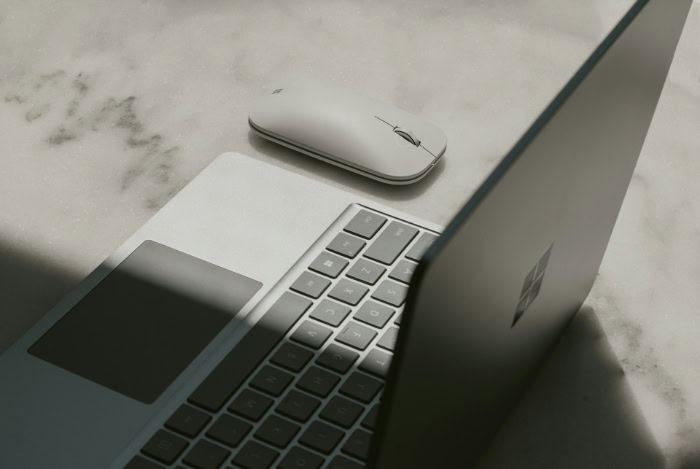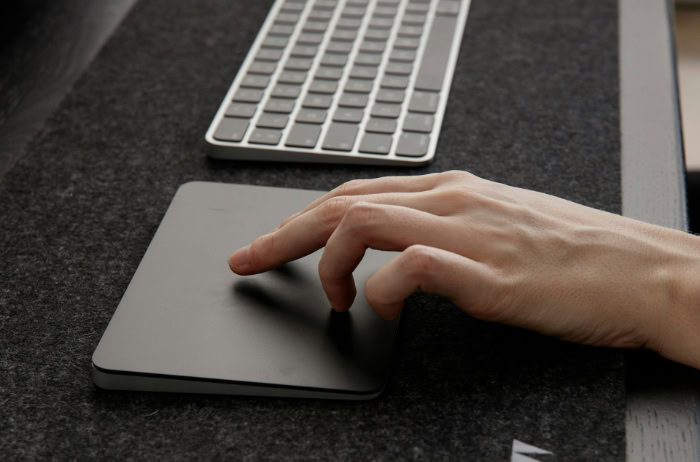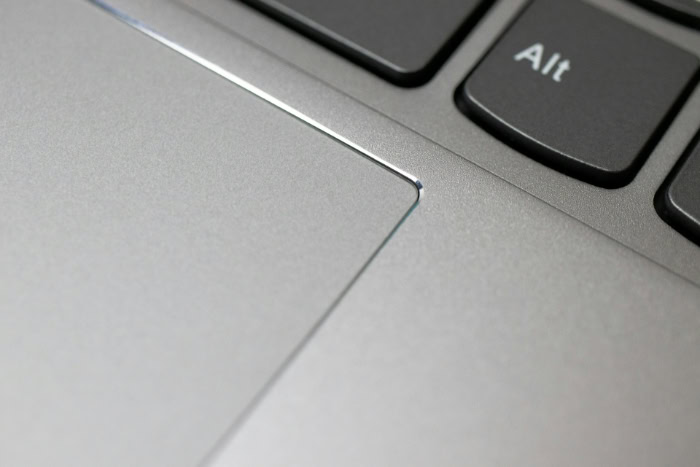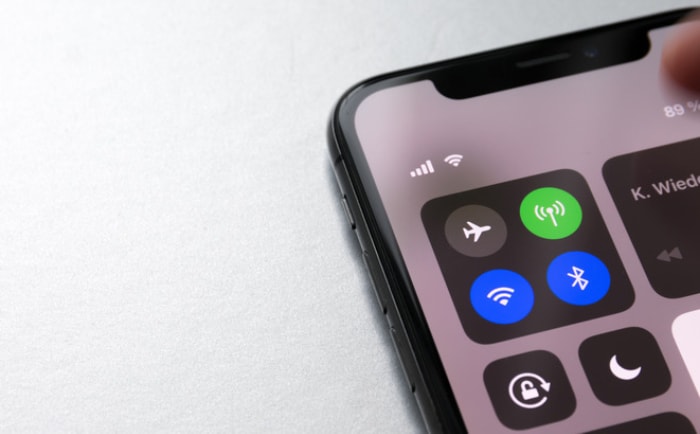Trackpad vs. Mouse: Everything You Should Consider

Reaching for a mouse or gliding across a trackpad often feels like second nature, yet choosing the right one for your daily routine can make a surprising difference. Subtle differences in comfort, speed, and control can add up over hours of work or play.
For students cranking out essays, designers perfecting pixel details, or professionals powering through spreadsheets, the right choice can boost productivity and even reduce discomfort. Factors such as ergonomics, gesture support, and portability all play a significant role in this decision.
Curious which input device could give you an edge? The answer may be simpler than you think.
Ergonomics and Health Considerations
How your hands, wrists, and shoulders interact with a mouse or trackpad can have a significant effect on your comfort and long-term health. Small details in design and usage habits may lead to noticeable differences in physical strain, fatigue, and overall well-being.
For people who spend hours at a computer, choosing the right device and using it mindfully can make daily computing much more comfortable.
Strain Reduction
Mice typically require a gripping motion and repetitive side-to-side or up-and-down movements. Over time, these small but constant actions can add up, resulting in wrist strain or even conditions like carpal tunnel syndrome.
Traditional mouse use often positions the wrist so it bends upward or to the side, which may increase pressure on nerves and tendons. Trackpads, on the other hand, allow the fingers to glide and tap, which can reduce repetitive gripping.
However, some people find the increased finger movement and limited surface area lead to fatigue, particularly when dragging or performing repeated gestures. Both devices benefit from regular breaks, relaxed grip, and attention to neutral wrist placement.
Switching hand positions and occasionally changing devices can also ease repetitive stress.
Posture Impact
The position of your hand and arm can influence how your shoulders and neck feel after long work sessions. Using a mouse often means reaching to the side of the keyboard, shifting the arm outwards and subtly rotating the shoulder.
Over many hours, this can lead to tension in the upper back, shoulder, and even neck. In contrast, built-in trackpads generally sit directly below the keyboard, encouraging hands to stay closer to the body’s center line.
This central placement helps promote better alignment in the shoulders and neck, which can reduce overall muscular fatigue. For external trackpads, placing the device close to the keyboard is essential for maintaining these ergonomic benefits.
Adjusting your chair, keyboard angle, and monitor height can further improve posture regardless of which device you choose.
Device Recommendations
Input device design has evolved to address comfort and health concerns. Vertical mice position the hand in a handshake-like posture that minimizes wrist twisting and encourages a more relaxed grip.
This can be especially helpful for users prone to wrist pain or those recovering from repetitive strain injuries. Trackpads with palm supports, or those that are angled to match the natural resting pose of the hand, also encourage neutrality and help reduce pressure on the wrists.
For anyone seeking relief from discomfort or looking to prevent future problems, experimenting with ergonomic devices and adjusting the workspace setup can make daily computing more comfortable and sustainable. Regularly stretching the hands and arms and listening to signs of tension can play a major role in maintaining good health at the desk.
Precision vs. Gesture Navigation

Choosing an input device often means balancing pinpoint accuracy with the convenience of intuitive controls. Everyday computer users, designers, gamers, and multitaskers often weigh the benefits of pixel-perfect precision against the fluidity of gestures when deciding between a mouse and a trackpad.
Each device brings specific strengths to the table, shaping how smoothly you interact with your computer, execute tasks, and personalize your workflow.
Mouse Advantages
A mouse offers accuracy and control that is hard to match with other input devices. For graphic designers adjusting detailed artwork, gamers aiming quickly in fast-paced titles, or office workers navigating dense spreadsheets, the mouse allows for exact positioning.
The ability to move the pointer in small, precise increments means tasks requiring careful selection or adjustment feel more natural. The tactile feedback of pressing physical buttons and scrolling with a wheel further enhances control, making repetitive actions less frustrating.
High-end mice can be fine-tuned to respond to subtle hand movements, which is an advantage for anybody needing meticulous handling and speed in their work or play.
Trackpad Strengths
Trackpads excel in environments where gesture navigation takes center stage. Modern multi-touch trackpads support swipes, pinches, and three- or four-finger gestures, streamlining everyday tasks like switching apps, zooming, or accessing mission control.
Creative professionals appreciate how quickly they can scroll through lengthy documents or images using just a light touch. For students and multitaskers, the ability to move windows, organize desktops, and execute shortcuts without lifting their hands off the keyboard can improve workflow efficiency.
Trackpads often feel more natural for actions that mimic smartphone and tablet gestures, seamlessly integrating into operating systems designed with touch input in mind.
Productivity and Workflow Efficiency

Efficiency often comes down to the right tools, and the choice between a mouse and a trackpad can significantly influence how quickly and smoothly you work. Each device has its own strengths in terms of productivity, catering to different types of tasks and work habits.
Some users find that a single input method streamlines their workflow, while others benefit from combining both devices to suit various scenarios throughout their day.
Task Efficiency
Many office and data-heavy environments rely on the speed and precision of a mouse. Clicking through spreadsheets, dragging files, or rapidly cycling through records feels faster and more natural with the tactile feedback and targeted control mice provide.
Repetitive tasks, such as data entry, selecting multiple items, or executing a series of identical actions, often see a boost in speed when handled with a mouse.
Trackpads tend to shine in creative and fluid workflows, especially for users who frequently employ gestures or need to scroll and zoom quickly through large visual canvases. Designers, writers, and students who transition between multitasking and detail work may appreciate the trackpad’s natural integration with modern software, offering a seamless way to flick between desktops, navigate long articles, or rearrange windows.
Multitasking
Multitaskers benefit greatly from the gesture capabilities built into modern trackpads. Swiping between virtual desktops, accessing app switchers, and performing quick pinches to zoom feels intuitive, especially when paired with keyboard shortcuts.
The combination allows for a fluid movement across multiple applications, letting users manage e-mails, documents, and creative tools with fewer interruptions. Keeping hands closer to the keyboard and input device can also shave seconds off every task, which adds up throughout a busy day.
Hybrid Setups
For those seeking maximum efficiency, a hybrid setup delivers the best of both worlds. Using a mouse for high-precision or repetitive actions, such as editing spreadsheets or gaming, and a trackpad for gesture-based commands or fast navigation can streamline workflow and reduce fatigue.
Many professionals position a mouse on one side of the keyboard and a trackpad on the other, switching devices based on the nature of their work. This approach not only enhances productivity but also reduces strain by allowing you to shift hand positions and distribute workloads more evenly.
Tailoring your input method to your daily routine lets you work smarter, not harder. Flexibility and personal preference play significant roles, so experimenting with different setups may reveal unexpected boosts in both comfort and efficiency.
Device Compatibility and Use Cases

Selecting an input device is not just about comfort and speed, but also about how well it integrates with your operating system, how easily it fits into your on-the-go lifestyle, and which settings make the most sense for your daily routines.
OS Integration
Many Mac users find that trackpads offer an almost seamless experience, thanks to deep integration with macOS. Features like smooth scrolling, multi-finger gestures, and built-in shortcuts feel natural and responsive.
System-wide gestures for things like Mission Control, app switching, and notification access make trackpads feel like an extension of the operating system itself. On the other hand, mice provide broad compatibility across platforms, functioning effortlessly with Windows, Linux, ChromeOS, and macOS.
Plug-and-play simplicity means switching between different computers or operating systems rarely poses a problem. For anyone using multiple devices or transitioning between environments, a mouse delivers familiar performance every time.
Portability
Portability is a major advantage of the trackpad, especially for laptop users. A trackpad is always available, built right into the device, and never requires extra space in a bag or on a desk.
For travelers, students, or professionals on the move, the convenience cannot be overstated. Travel-friendly mice, however, offer their own brand of portability.
Compact wireless mice fit easily in any laptop bag, and many models operate smoothly on a variety of surfaces, including airplane tray tables or coffee shop counters. Some users prefer the comfort and familiarity of a mouse even when working away from their regular setup, making a lightweight mouse a popular companion for mobile productivity.
Ideal Scenarios
Certain devices excel in specific settings. Trackpads are often the tool of choice during presentations. Quick gestures allow for smooth navigation through slides, and built-in features support easy highlighting or zooming. Presenters can manage their content fluidly without relying on external accessories.
In contrast, working with large external monitors or multi-screen setups typically favors a mouse. Swift pointer movement and precise control become more important as screen real estate grows, allowing users to drag files across desktops or select text in distant corners without repeated swiping or repositioning.
Each input device has moments where its strengths make all the difference, and matching those strengths to your daily needs creates a more seamless, comfortable workflow.
Cost and Value Considerations

Price and long-term value often influence the choice between a mouse and a trackpad as much as comfort or features do. Different price points, expected durability, and the availability of third-party options all factor into the overall investment.
For anyone looking to balance quality with cost, a closer look at both initial expenses and ongoing value is essential.
Upfront Costs
Many users first notice the significant gap in cost between high-end trackpads and basic mice. Devices such as the Apple Magic Trackpad often come with premium price tags, reflecting their design, integration, and advanced gesture support.
In contrast, reliable wired or wireless mice can be found at a fraction of the cost, making them easily accessible for students or budget-conscious buyers. While more expensive mice with specialized features exist, entry-level models typically handle everyday tasks without difficulty.
Longevity
Durability and battery life also play major roles in the long-term value of any input device. Mice, especially those designed for office or gaming use, are generally built to withstand millions of clicks and years of movement.
Many models use replaceable batteries or can be charged via USB, limiting downtime. Trackpads, while durable and low-maintenance in daily use, depend on built-in rechargeable batteries or computer power, which may require more frequent charging for heavy users.
Some users may find that trackpads feel less robust after several years, particularly if subjected to frequent tapping or pressure.
Third-Party Alternatives
Third-party brands offer a broad range of alternatives that bridge the gap between quality and price for both mice and trackpads. Logitech’s MX series mice, for instance, are known for superior ergonomics and performance, placing them in a higher price range but promising comfort and reliability.
Microsoft Surface accessories include both mice and precision touchpads, each designed to maximize compatibility and user experience for Windows devices. For those wanting to avoid the premium price of manufacturer-branded products, third-party options often deliver comparable features, robust build quality, and the flexibility to suit a variety of setups and personal preferences.
Conclusion
Making the choice between a trackpad and a mouse comes down to your individual priorities and how you use your computer each day. Trackpads deliver comfort, seamless gesture navigation, and work especially well for macOS users seeking fluid multitasking.
Mice win out in situations demanding precise control, repetitive actions, or when working with large monitors and specialized applications. Budget and long-term value can also influence your selection, with affordable mice offering basic functionality and premium trackpads or advanced mice providing extra features for a higher cost.
For those who value comfort and want to reduce physical strain, ergonomic designs such as vertical mice or supported trackpads can make daily computing more sustainable. If your workflow relies on quick gestures and multitasking in a macOS environment, a quality trackpad may boost your productivity.
On the other hand, professionals needing pinpoint accuracy for gaming, design, or spreadsheets may find a mouse indispensable.
Ultimately, the best setup is the one that matches your habits, needs, and environment. Consider what matters most, whether it is health, precision, budget, or flexibility, and choose the device or combination of devices that will keep you comfortable and efficient day after day.


